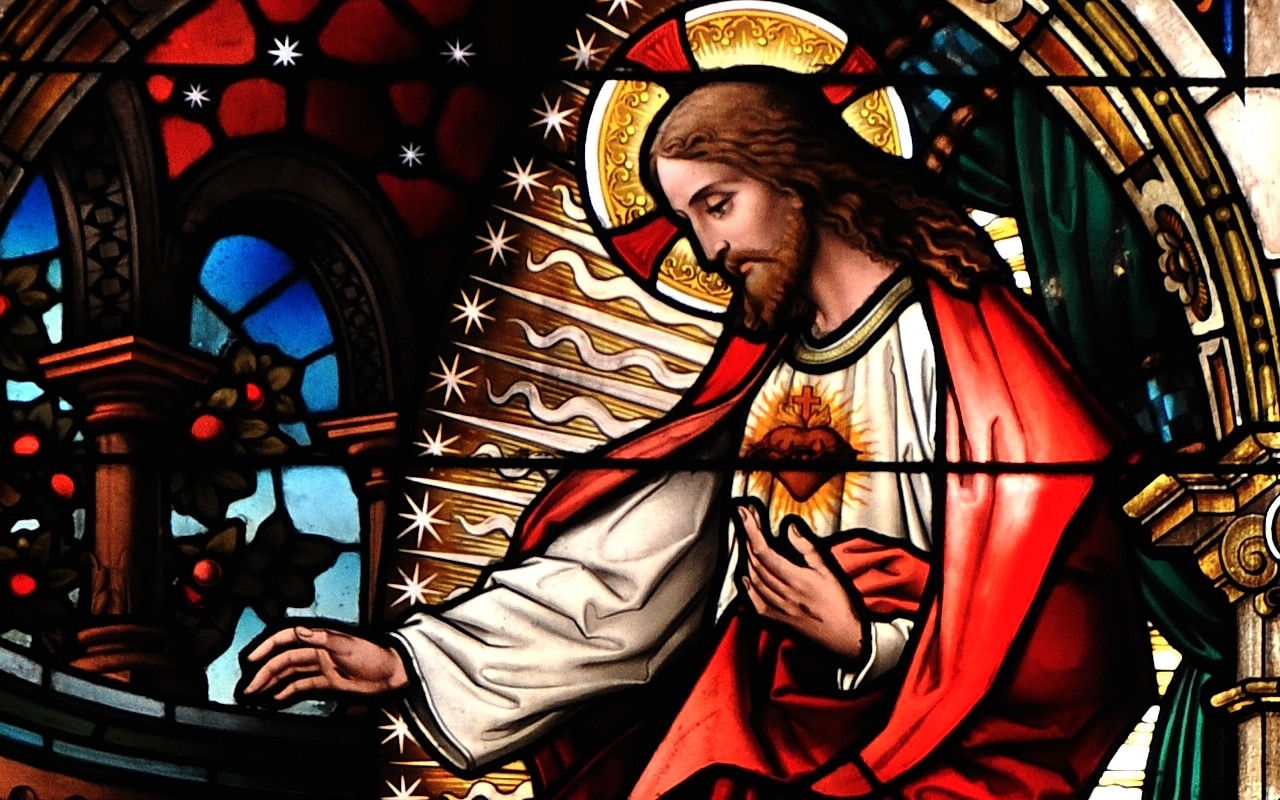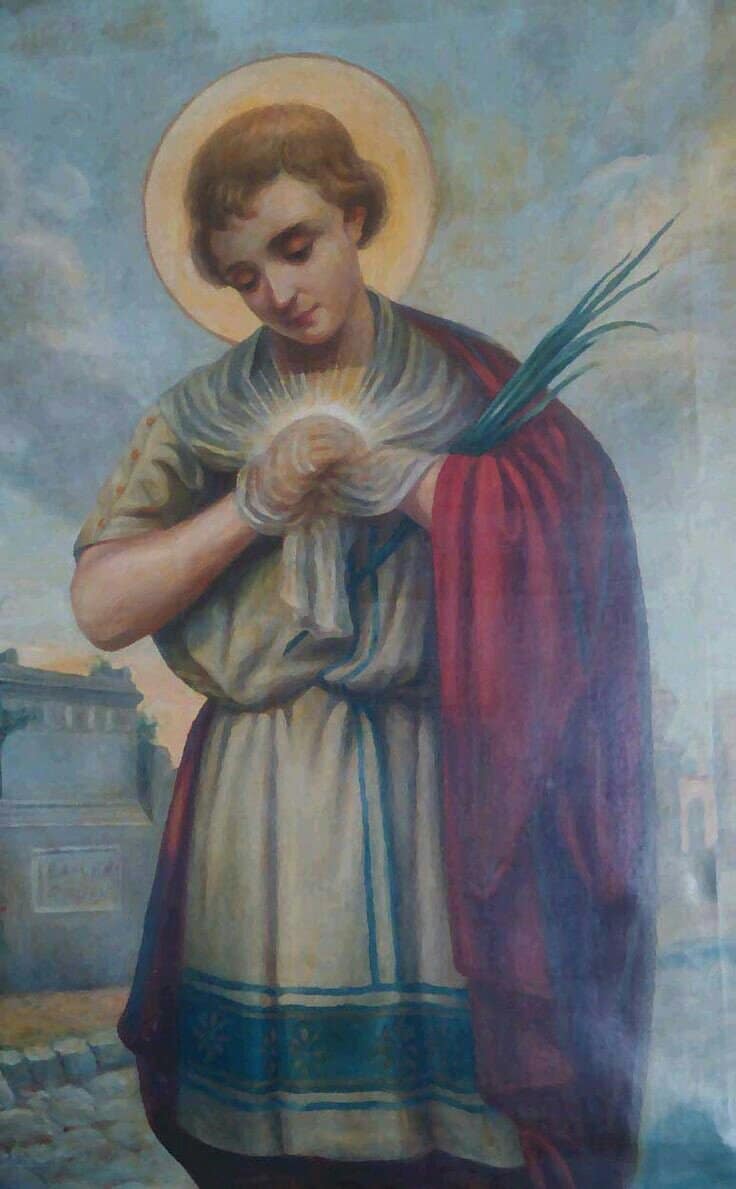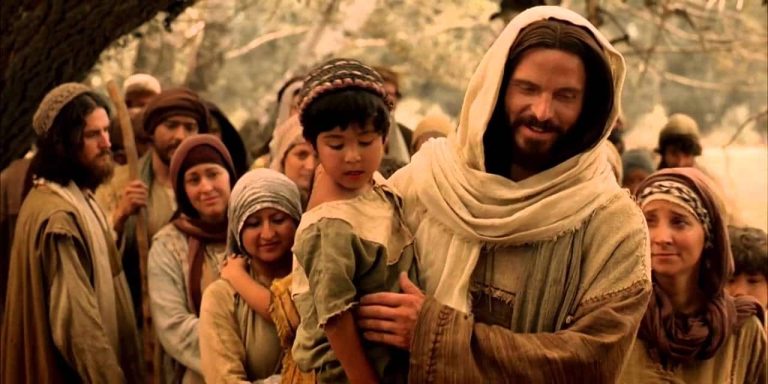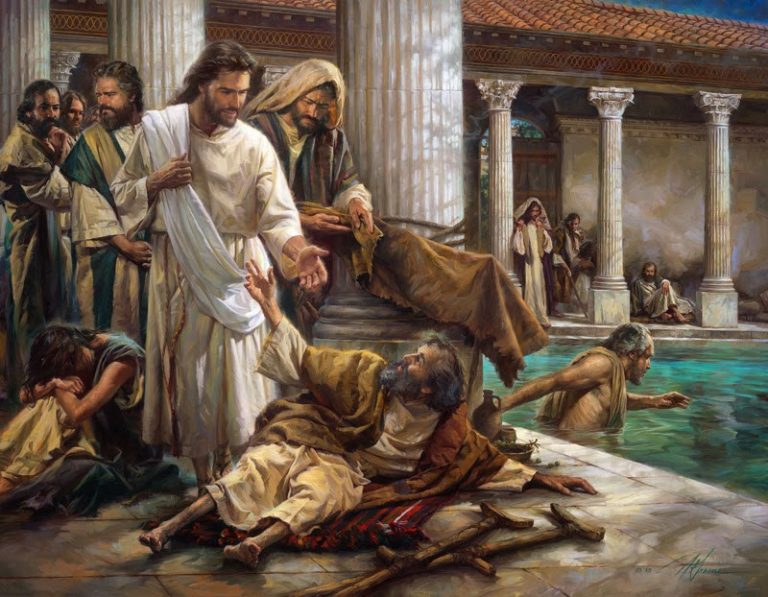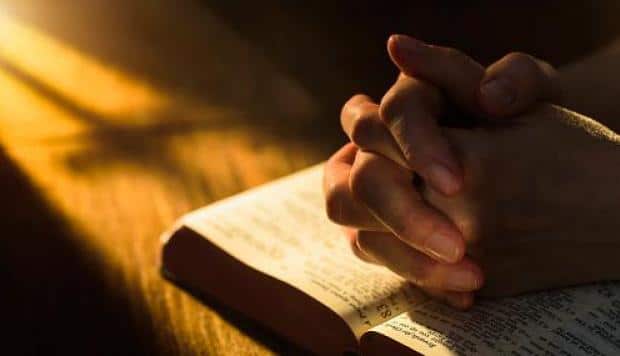Liturgical Year: What is it? Meaning and Origin
The Liturgical Year is the year in which the Church celebrates the feasts of the Lord, the Virgin and the Saints. It begins with Advent Sunday, that is, the last Sunday of November or the first of December and ends with the feast of Christ at the end of November.
What is the Liturgical Year?
The Liturgical Year , liturgical cycle, Christian year or year of the Lord, are some of the names received during the year in the Christian Churches to the various parties that celebrate from birth to the last coming and sacrifice for our Salvation of our Lord. Jesus Christ.
It is then a salvific reality, that is, a journey that is carried out with absolute faith and love for God. It is a way of thanking the father for having sacrificed his own Son Jesus Christ (the only Mediator between God and men) to offer us salvation and the promise of paradise.
Definitely, this is an act that shows us the infinite and unconditional love that God has towards each of his children and servants.
Origin of the Liturgical Year
The origin of the liturgical year is uncertain. This was emerging through the centuries as the Christian festivals were born.
The Christian holidays that we know today arise from a desire of the Catholic Church to delve into the significant moments of the life of our Lord. It started with the celebration of Sunday and Passover, then Pentecost, and continued with the rest as time went on.
When Christianity emerged, there were already numerous religions that had their own celebrations, however, they wanted to give a different meaning to the pagan festivals that these people celebrated, so the missionaries and evangelizers of the time were adapting (to put it bluntly) some way) these holidays by other Christians which were intended to celebrate and remember the life of Jesus Christ.
Over the years, what we know today as the “Liturgical Year” was shaped.
Characteristics of the liturgical year
The full, conscious, dynamic and voluntary participation of people has allowed followers or seekers of the truth of God and his word to have no doubt that in liturgical celebrations it is Christ who is present.
Each celebration is a prophetic announcement of the hope that has been sown in believers that the kingdom of God on earth will come one day and we will enjoy the promised paradise.
Celebrating the liturgical year is celebrating Christ and the saints that the church proposes to us throughout the year, it should not be done out of obligation but out of devotion, out of love, faith and the glory that we owe to God, our Lord.
They are moments where we can understand how God’s Divine love will lead us to salvation, through multiple experiences and words that invite us to reflect and live according to the life of Christ and his example. Also, the path to faith is celebrated and leads us to internalize and deepen the great path that we must follow in order to then enjoy salvation and one day be with our Father again.
Purposes of the Liturgical Year
The Liturgical Year has two main functions or purposes: A catechetical purpose and a salvific purpose. To better understand these concepts, continue reading this article.
The Catechetical Purpose
It aims to show us and teach us the mysteries of Christ: Christmas, Epiphany, Death, Resurrection, Ascension, among others. The liturgical year celebrates the mystery of salvation in the stages of the mystery of God’s love, manifested through his son Jesus Christ.
The salvific purpose
It refers to each moment of the liturgical year in which the specific grace of that mystery that we live is granted to us: the grace of Christian hope and the conversion of hearts for Advent; the grace of the spiritual and intimate joy of salvation that occurs at Christmas; the grace of penance and the adoption of a different life before, during and after Lent; Christ’s victory over evil and sin and death at Easter.
Courage and bravery on the day of Pentecost to go out to evangelize, the grace of serene hope, honesty in everyday life and donation to others in Ordinary Time, among others.
Basically, we take the fruits that Christ brings us in this here and now for our salvation and progress in holiness while preparing us for his memorable coming or Parousia.
In other words, the Liturgical Year religiously honors the “anniversaries” of the historical events of our salvation, offered by God, transforming hearts and strengthening our faith under the work of the Holy Spirit, a source of divine grace, encouragement and strength for his believers and children of God.
What are the times of the Liturgical Year?
The times of the liturgical year are called “Strong Times” where we celebrate the mysteries of the life of Christ at different times of the year. In each liturgical season, the priest is dressed in a chasuble of different colors:
White, means joy and purity. It is used at Christmas and Easter time.
Green means hope. It is used in ordinary time.
Purple means mourning and penance. It is used in Advent, Lent and Easter.
Red, means the fire of the Holy Spirit and martyrdom. It is used on the feasts of the holy martyrs and on Pentecost.
Advent
It is a waiting time and corresponds to the four Sundays before the Christmas party. During this time we prepare ourselves for the mystery of the coming of Jesus to earth, that is, the birth of the Son of God, who was humble enough to want to come and live among us to experience joy and love, but also the pain and suffering. He was a mortal human being just like us, the difference is that he did not live in sin.
“Advent” means coming or arrival but who is coming? for what and for whom does it come?
It is celebrated by contemplating the triple coming of Jesus, according to Saint Bernard: “Jesus came” (born of the Virgin Mary), “he comes” (today, in the signs of the times), and “he will come” (in glory, at the end of the history).
Sometimes we need to reflect deeply on what we already know: Jesus is coming, the one sent by God, the savior. That is why “Advent” equals Hope. We do not wait for an unknown God, on the contrary, we are certain of who he is, his work, life, miracles and his word.
In addition to the hope that the one who has already visited us will return. It is a hope that inspires us to be vigilant, attentive and prepared. How? With prayer and clarity, with the conviction and certainty that the Kingdom of God is closer than we imagine.
Advent is a time of happiness, happiness and joy, therefore, Christians listen with greater enthusiasm to his word (especially the prophecies of Isaiah) and sing divinely alluding to the coming of the Lord, especially the prophecies of Isaiah; The great figures that the liturgy presents in this period are those of the prophet Isaiah, Saint John the Baptist, and the Virgin Mary.
Isaiah fills us with hope in the coming of Christ, telling us that it will bring peace and salvation to all his children.
Saint John the Baptist invites us to penance and the definitive adoption of a new lifestyle in order to receive our Lord Jesus Christ in a purified, humble and clean soul.
For her part, the Virgin Mary is the one who awaits, prepares and carries out Advent. For Christians, she represents that figure and example of faith, hope and the representation of what the phrase “Thy will be done in me” brings, or trust in God’s plan for our lives.
Love for God does not begin in man, because it is God who has loved us first and has come to look for us, to give us and pour out on us his blessings, mercy and love year after year, with the face of a child, with total innocence.
Before Advent, the worker is waiting for the Christmas bonus, the student is waiting for the positive results of his school year, the family is waiting for the holidays, the merchant is waiting for the balance, we all wait for the new year… In short, it is a time and a month Standby. In addition, it is the month of Mary.
What color is used in Advent? During the time that Advent lasts, the priests wear purple vestments, as a color of penance. A sober color that invites the Christian community to active and profound reflection and meditation on the mystery that we will celebrate at Christmas, as is also done in Lent on Easter.
It is important to mention that during this period the Gloria is not said or sung, since we are in expectation and not in a time of jubilation. Nor is the temple decorated with flowers as on other days of penance, what is maintained is the singing of Alleluia before the proclamation of the Gospel. This omission is proper and unique to Lent.
During Advent, an Advent wreath is made, a wreath of pine branches and a symbol of life. It is made up of a wide variety of symbols:
the circle shape
The circle has no beginning or end. It is the sign of God’s Love, eternal, without beginning or end and also that our love for God and neighbor must never end.
the green branches
Green is a color that symbolizes hope and life. God wants our greatest longing to be to reach a closer union for him and that we wait for his grace and the forgiveness of our sins and that we trust in his promise (word) of eternal life.
the four candles
They represent the four Sundays of Advent, the growth and strengthening of our faith, the light that grows in our days in our hearts, but also the darkness caused by sin that blinds man and distances him from God and his example of life.
Just as the darkness dissipates with each candle that we light, the centuries have been illuminated with the ever closer arrival of our Lord to our world. Every Sunday a candle is lit while family prayers are held. Turning them on and admiring how their light grows is to see how the light, the heat and our faith also grow, to see how our devotion and love for God grow.
Different colors
The colors of the candles should be varied. One purple, one red, one white and one pink. There are those who choose to put three purple candles and one pink or one white. Regardless of which option you choose, light the abode(s) first, as these represent the time of penance and conversion, while the white candle or the pink candle represents joy at the arrival of Jesus Christ.
Advent, a time also linked to the Virgin Mary, a time to “help” our Mother to carry the weight of God. This also applies to work, family, our relationships. The weight of God carrying him with him is more joyous and lighter; In Latin America, we honor our patron saint: Our Lady of Guadalupe.
Cf. Flp. 4, 4-5 tells us: “Rejoice in the Lord; I repeat, be happy. May your measure be known by the whole world. The Lord is near.”
At the end of Advent, the Christmas Season begins, which goes from Christmas or Birth, which is celebrated on December 25 and extends from I Vespers of the Nativity of Our Lord Jesus Christ, at sunset on the 24th, until II Vespers. of the Solemnity of the Baptism of the Lord, the Sunday after the Epiphany (January 6). It is a time that reminds us that God came into this world for the purpose of saving us.
During these days, the Church commemorates the coming in mortal flesh of Christ to earth. God continues to manifest through each of us. Since it is a time of joy, the priests wear white robes.
Christmas is a festival of great importance, which shows us the manifestation of God made man. During this time, some parties are celebrated that join this celebration, something unthinkable in Lent or Easter. Some of these parties are:
- Saint Stephen (December 26)
- Saint John the Evangelist (December 27)
- Holy Innocents (December 28)
La Sagrada Familia (Sunday within the octave of Christmas, or December 30 if Christmas fell on a Sunday).
It is popular belief that this time ends on “Three Kings’ Day”, however, the Catholic Church commemorates the birth of Christ and his manifestation (Epiphany) until the following Sunday, when he celebrates the feast of his Baptism and the beginning of public life. .
Lent
Lent begins with Ash Wednesday and continues for forty days prior to the Easter Triduum, ending at the beginning of the Mass of the Lord’s Supper in the early hours of Holy Thursday, adding up, it would be 43 days in total. It is a time of preparation for Easter or Paso del Señor. A time of prayer, penance, conversion of heart, fasting and almsgiving that begins with Palm Sunday and ends with Resurrection Sunday.
During this time the Gloria and the Alleluia are neither mentioned nor sung. These joyful songs can well be kept in the heart and sung with passion at Easter time. It is recommended to pray the Via Crucis daily or at least on Fridays to join the Lord’s passion and as a way to redeem ourselves for our sins.
It is celebrated to remind each Christian of their situation of sin and invites them to repent of their sins from the heart. Also, it promotes a change on a personal level, in which we help our neighbor in a disinterested way, to practice activities such as almsgiving, prayer, fasting, and following the path of Jesus, to make our life on this physical plane something significant, that makes a difference and allows us to leave a legacy.
Symbolically, these “forty days” remind us of the forty days that Jesus lived in the desert in prayer and fighting against the attacks and temptations of the evil one. This party is based on several passages described in the Holy Bible and that are related to the number forty, among them, we can mention:
- The forty days of Moses and Elijah on the mount of God.
- The Forty years of the people of Israel in the desert.
- The forty days that Jesus fasted before beginning his public life.
It is a time of preparation before Holy Week in which we must meditate, reflect deeply, analyze and continue learning about the life of our Lord Jesus Christ. As devout faithful, you must obey a series of activities dictated by the Catholic Church, which allow you to strengthen your faith through acts of penance, reflection and sacrifice.
An example of these activities is fasting and avoiding eating meat on certain days during this celebration, since in ancient times it was said that eating meat was a luxury that only the wealthiest and most powerful could enjoy and as an offering and sacrifice, they stopped eat it and that day they approached the poorest and most needy.
There are other sources that affirm that the consumption of meat was slow since it represented the sacrifice of animals and was related to violence. This sacrifice or offering to God is not about fasting from food and drink only, but also includes purifying our body, mind and soul from all actions, habits and feelings that distance us from God.
It is a time of reflection, meditation and much prayer. A time to eliminate all those selfish, vain thoughts, negative attitudes, laziness and bad intentions and focus on good habits, on healing our hearts and forgiving from the heart, that is why the liturgical color of this season is usually purple. , which means mourning and penance. Ultimately, it is a moment of spiritual conversion.
Holy Week
Holy Week, also known as Semana Mayor, begins with Palm Sunday and ends with Resurrection Sunday. There are eight days where the Easter Triduum is celebrated, that is, the moments of the Passion, Death and Resurrection of Jesus Christ are remembered and lived. It is the most important celebration of the liturgical year.
Holy Week in Venezuela is one of the main traditional festivals and in its celebration the family reunion is the protagonist revolving around a sharing of the so-called “7 stews”, this is nothing more than abundant food with a protein base that contains some variety of fish, since, as said tradition says, red meat should not be eaten.
Holy Wednesday has a particular devotion on the part of its parishioners who overflow the Basilica of Santa Teresa to worship the Nazareno de San Pablo or Limonero del Señor.
Palm Sunday of the Passion of Christ
Palm Sunday is the last Sunday of Lent, it opens Holy Week and is also known as “Call of the Lord’s Passion”. Mainly the Passion of Christ is commemorated and the color red is used, in relation to the celebration of the Passion of Christ.
In the city of Caracas, the tradition of Los Palmeros de Chacao is consolidated, a fortuitous group of people who go in the company of the local priest to the Cerro “El Ávila” or Guaraira Repano (as it is currently known) to look for the palms ( it is traditional that they are curled and decorated) that they will take in procession to the churches to later be blessed. This is done as a suggestion to the triumphal entry of Jesus into Jerusalem on Palm Sunday.
Once the procession is over, the Passion Mass begins. During this, the Gospel of the Passion of the Lord is read, which is sometimes in charge of three people: the texts in which Jesus speaks would correspond to the priest, another reads as a chronicler, and the other characters by another reader.
The Palm Sunday celebration begins with the Blessing of Palms, continues with the procession and culminates with the Passion Mass, being a great celebration of glory but of passion at the same time.
This day has two perspectives that come together in one, on the one hand, the triumphal entry into Jerusalem where he is hailed as king, and on the other, by shedding his blood and dying on the cross he triumphed over sin. This is the true meaning of Palm Sunday.
First days of Easter
The first days of the so-called “Holy Week” or “Semana Mayor” are still Lent time, therefore, both on Monday, Tuesday and Holy Wednesday the color purple is used. These correspond to the “minor” days within Holy Week but they are still very important.
On the morning of Holy Thursday, the Chrism Mass is celebrated, in which the bishop of the diocese consecrates the holy oils: the oil of the sick, the holy chrism and the oil of the catechumens. Although it is usually celebrated on Holy Thursday in the morning, the functional characteristics of this celebration allow it to be transferred to other days at the end of Lent.
The whole of Holy Thursday morning is still the time of Lent, as can be seen from the texts of the Liturgy of the Hours, which is strongly recommended to be celebrated with the faithful, in public. Lent ends on the afternoon of Holy Thursday around three o’clock, before the celebration of the evening mass of the Lord’s Supper.
Easter
Easter is also known as Easter Day, Easter Sunday, Resurrection Sunday, Glory Sunday or Holy Sunday.
The word ” Passover” comes from a Hebrew term meaning “to pass over.” It refers to the way in which Jehovah protected the Israelites from the plague that killed all the firstborn of Egypt (Exodus 12:27; 13:15).
God gave the Israelites instructions on how to celebrate the first Passover. Some of the aspects that the Bible mentions related to the celebration of Easter are the following:
The sacrifice
On the 10th day of the month of Abib (Nisan), families would choose a one-year-old sheep or goat, and on the 14th, they would sacrifice it. In the first Passover celebration, the Israelites sprinkled the animal’s blood on the top of the entrance and on the doorposts, roasted it, and ate it (Exodus 12:3-9).
Food
In addition to sheep or goat, the Israelites ate unleavened bread and bitter vegetables during Passover (Exodus 12:8).
Party
After Passover, the Israelites celebrated the Feast of Unfermented Cakes, which lasted seven days. During those days they did not eat leavened bread (Exodus 12:17-20; 2 Chronicles 30:21).
The education
Parents used the Passover celebration to tell their children about Jehovah (Exodus 12:25-27).
Trip
Over time, the Israelites began to travel to Jerusalem to celebrate the Passover (Deuteronomy 16:5-7; Luke 2:41).
other customs
In Jesus’ time, wine was drunk and praises sung during the Passover celebration (Matthew 26:19, 30; Luke 22:15-18).
This festival celebrates the resurrection of Jesus Christ on the third day after being crucified (according to what is narrated in the New Testament of the Holy Bible). It is the most important celebration of the Christian Church.
With Easter begins a period known as Easter Time, which lasts fifty days and ends on Pentecost Sunday. Also, Holy Week ends and during these days the crucifixion and death of Jesus Christ is commemorated on Good Friday and his resurrection and appearance before his disciples are celebrated on Easter Sunday.
According to the Holy Scriptures, during Easter God gives Christians hope for the resurrection and a new perspective of life, represented in the return of Jesus from the dead.
Easter is considered a mobile holiday, that is, its day of celebration varies from one year to the next. This is because the date is not set according to the civil calendar, but by the liturgical year, which is governed by lunar cycles.
So we can easily locate Easter by going after the first full moon after the start of spring in the northern hemisphere and the start of fall in the southern hemisphere.
In this sense, Easter can be celebrated between March 22 and April 25. According to the date of this, the dates of other religious festivals such as Pentecost and the Ascension can then be calculated.
Easter Triduum (Thursday to Holy Sunday)
The Easter Triduum celebrates the Passion, Death and Resurrection of Christ and is the heart of the liturgical year. It comprises the three days from the eve of Holy Thursday to the II Vespers of Easter Sunday. Practically, it is already Easter time, although it has a special consideration.
Holy Thursday: Supper of our Lord Jesus Christ
On Holy Thursday, the evening mass of Jesus Christ’s supper is celebrated, in which he instituted the Eucharist, the priestly order and the commandment of love. Traditionally it is celebrated with great solemnity and the Gloria is sung again but not the Hallelujah.
The church should not be adorned with many flowers and the songs are oriented to the institution of the Eucharist. Traditionally, after the Gloria, all the bells stop ringing and will not ring again until Holy Night. Also, the purple color of Lent is replaced by the Eucharistic white.
The liturgy of Holy Thursday is usually celebrated in an evening mass (after the “ninth hour”, approximately at nightfall) which is mainly characterized by the emotion and solemnity of the celebration, with an atmosphere that is partly witty but also joyful. , which will culminate with the reservation of the Blessed Sacrament in the Monument.
The celebration culminates emphatically after the reservation of the Blessed Sacrament, where it is reported that such celebration has concluded and the celebration that will take place the following day is invited. The blessing is not imparted as the celebration continues the following day.
From this point on, the atmosphere will become more sober and sad, since these are the feelings that will mark the next few days until Easter Sunday.
Good Friday of the Passion and Death of our Lord Jesus Christ
Good Friday is a day where the death of Jesus on the cross to save humanity is remembered. The liturgy of this day is of a very eloquent sobriety. It is the day of the Passion and Death of the Lord, so the Eucharist is not celebrated. Red is used again to represent and commemorate the passion and death of Jesus Christ.
Let us remember that this color that had already been used in the celebration of Palm Sunday, however, on this day it is characteristic again.
The highlights of the Good Friday liturgy are the story of the Passion according to Saint John, the universal prayer and the adoration of the Cross. It is a day celebrated mostly with acts of silence and internal recollection. Also, it is a day of fasting and abstinence from meat.
As we mentioned in previous paragraphs, traditionally, the bells do not ring from the afternoon of Holy Thursday, so in many places a ratchet was used to call people to join the celebration. Despite the fact that it is a practice that is currently used very little, the abstention from the ringing of bells continues to be maintained.
The celebration of the death of Jesus Christ is usually celebrated at approximately three in the afternoon on Good Friday, a time when the church is completely stripped of flowers and decorations, remaining as sober as possible, this as a sign of mourning for death. of Jesus Christ.
Both when entering and when leaving, the priests go in silence, there is no song in this celebration except for the song during the adoration of the cross.
Communion is given with the forms stored the day before (Holy Thursday) in the Monument, since the Eucharist is not celebrated. Once again, as the blessing is not imparted on Holy Thursday, the celebration that had begun with the Mass of the Lord’s Supper will culminate with the Easter Vigil, where the final blessing will be imparted.
The Orthodox Church commemorates this date with the name of Good and Great Friday . Like the Catholic Church, the Orthodox stop celebrating Mass on this day, except when the date coincides with the Annunciation of the Virgin (March 25). The vestments of the patriarchs and other religious change to black during this date and on Holy Saturday.
Holy Saturday of the Burial of our Lord Jesus Christ
In the early Church Holy Saturday was known by various names such as: the Great or Great Saturday, Holy Saturday, the Angelic Night, the Easter Vigil, among others and was nothing more than Holy Thursday, a day of joy with sadness intermingled.
Holy Saturday is a day of silence and much prayer. Just like the day before, it is forbidden to celebrate the Eucharist. Spiritual retreats are usually organized on this day to deepen the paschal mystery. It is the end of the period of Lent and penance and the beginning of Easter Season, which is a joy. By a very rare exception, in the early Church this was the only Saturday on which fasting was permitted.
During Holy Saturday the Church remains next to the tomb of the Lord, meditating on his Passion and Death, his descent into hell and awaiting his Resurrection in prayer and fasting.
The Church refrains from the sacrifice of the mass, thus leaving the altar stripped of all kinds of decoration, the Tabernacle remains completely open and an image of Jesus Christ is usually placed at the foot of the altar in the sepulcher the altar until the point after After the solemn Vigil of the Resurrection, the joys of Easter are inaugurated, with such exuberance that it will flood the fifty days of Easter.
Easter Sunday of the Resurrection of the Lord
At the end of Saturday, the Church celebrates the Resurrection of Jesus Christ with a Night Vigil, considered “Mother of all Vigils” by Saint Augustine. It is celebrated at dawn on Easter Sunday. This sleepless night is one of the most solemn for Catholics, since Lenten mourning is broken and the Alleluia is sung again. This holy night reminds us of the triumph of Jesus Christ over death.
The rites during the night are the longest and most solemn of the entire Roman liturgy: first, the Paschal candle, image of the Risen Christ, who illuminates the world and the faithful, is lit. It continues with the celebration of the Easter sacraments and continues with the Eucharist, in which the Apostles recognize the Lord in the breaking of the bread.
On Sunday morning the Easter Mass is celebrated, the mass of the day and in the afternoon, the II Baptismal Vespers, with a procession to the baptistery and sprinkling of water, and ends with the Easter Triduum.
Ordinary Time or during the year
The so-called “ordinary time” or “time during the year” includes those days in which central events of the life of Christ are not celebrated.
In those weeks, the Church of Rome meditates on the Gospel of Christ, his preaching and ministry prior to his Passion.
During this time there is room for other festivals and solemnities of the Lord and of the Saints: first of all, some fixed ones such as the feast of the Most Holy Trinity, the Sunday after Pentecost; the feast of Corpus Christi, traditionally the Thursday following Trinity, but in most cases, moved to Sunday; and the feast of the Sacred Heart of Jesus, which is celebrated on the Friday after the ancient octave of Corpus Christi, therefore, the week after this feast.
Other festivities take place in ordinary time, such as that of San Juan Bautista, Santiago Apóstol or the Assumption of the Virgin, among others. At this time, these celebrations have greater preference over even Sundays, since no single event in the history of Salvation is specifically celebrated, although, since apostolic times, the resurrection of Christ continues to be commemorated every Sunday.
The liturgical year ends with the celebration of the Solemnity of Christ the King, with a clearly eschatological meaning, that is, with the hope of eternal life.
Pentecost
It is a party that is celebrated throughout the Church, with which the descent of the Holy Spirit on the Apostles is remembered, fifty days after the Resurrection of Christ, The word Pentecost comes from the Greek meaning “the fiftieth day”, that is to say , 50 days after Easter.

Hello! Let me enthusiastically introduce myself as a dedicated blogger fueled by an intense passion for meticulously crafting insightful and well-researched blogs. My mission revolves around providing you, dear readers, with a veritable treasure trove of invaluable information.

